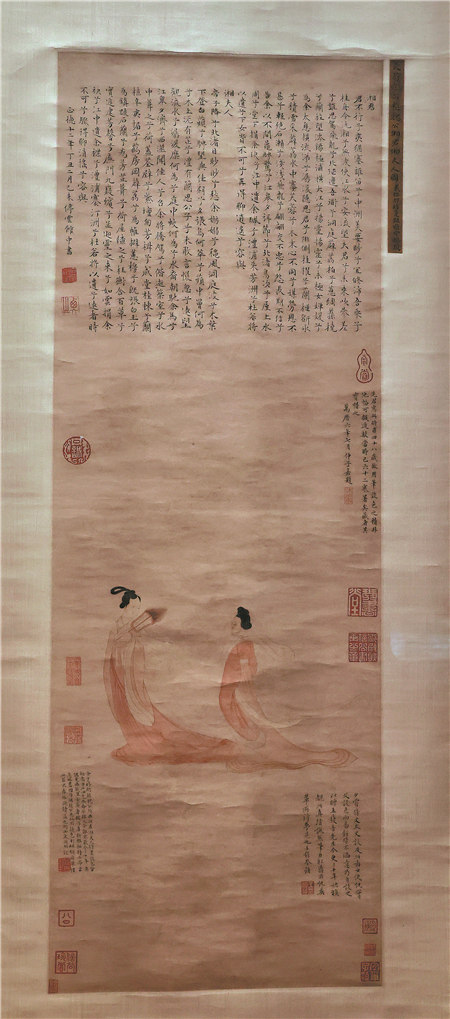

The value
The curators seek to remind visitors that it's not only female celebrities who deserve to be remembered. Many ordinary women, whose names have not been etched in history, also speak for their gender.
This is why a section of the exhibition is dedicated to reflect the different facets of the everyday life of women in history. They raised silkworms and wove. They enjoyed leisure and played on swings. They teased birds, and had fun with their children.
As He Xie, the exhibition designer, points out, there may be chemistry between visitors and the women on display in the gallery.
In terms of color coordination in the gallery, bold combinations of pink and blue have been chosen to portray the varied, colorful nature of ancient women.
"Regarding the spatial layout, there are no extensive changes," He says. "Instead, adjustments to the visual perspective are achieved through the addition of partitions, railings, walls with windows and moon-shaped gates. Soft partitions, like veils and curtains, have been added to collectively create a subtle atmosphere specific to women."
In addition to artifacts and panels of text, multimedia displays and creative light and shadow installations have been incorporated. An animated video features women of the past engaged in festival activities, allowing viewers to feel as if they are stepping into the lives of ancient noblewomen as they pass through a moon-shaped gate. A poetic painting screen installation creatively presents classic figures from the exhibits.
"A thought-provoking atmosphere is created through poetry, imagery, and silhouettes, helping visitors to appreciate the women depicted in the paintings," He adds.
Timeless Beauties, which runs until end of October, is the final installment in a four-phase exhibition of the Palace Museum's figurative collection that began in 2021.Previous installments focused the spotlight on hermits of high virtue, paragons of national governance, and people of various social classes.
"The purpose is to authentically and responsibly preserve and transmit the cultural heritage of the Forbidden City," says Du Haijiang, deputy director of the Palace Museum. "Using these paintings as a medium to tell compelling stories, we can also promote a sense of cultural pride in our country."